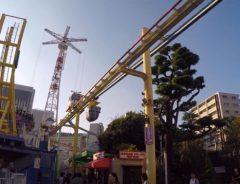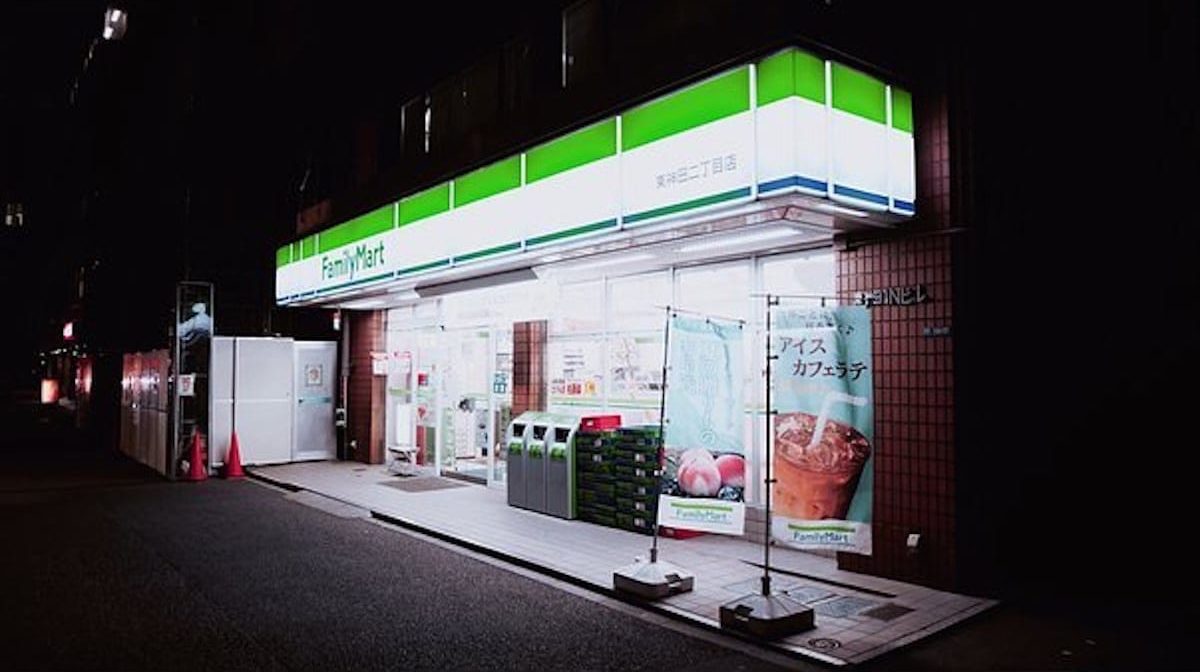- Tags:
- Japanese convenience stores / konbini / Tokyo
Related Article
-

Tokyo Subway Light Up Forgotten Stations and it’s Partly Creepy-Cool, Partly Historical-Cool
-

Tokyo was rocked by an earthquake but one damage report shook Twitter users with laughter
-

1500 Pikachus Invade Yokohama for Outbreak 2018 Summer Festival in Tokyo
-

teamLab’s Digital Art Wonderland ‘Borderless’ Gets Ephemeral Cherry Blossom Makeover for Spring
-

Hanayashiki: A Trip To Japan’s Oldest Amusement Park
-

Awesome Japanese Animated Short Shows Us The Magic In Our Own Mind



Tokyo has been described as the only major city in the world that really works. It’s quite an indictment of the world’s other big cities, but it’s true: look at any other city of over a million people and you’ll find a mayor struggling to find solutions to long-standing, seemingly intractable urban problems, from pollution to poverty, crime to traffic congestion.
Despite being the biggest city in the world, Tokyo has none of these problems. Even its least prosperous neighbourhoods are well-built and well-maintained, women can walk home late at night without fear of being robbed or attacked and traffic jams are so unusual they make the evening news.
In Tokyo, you can take a lungful of air, even at the Shibuya crossing at rush hour, without fear of having a coughing fit. If a city is a living, breathing organism, Tokyo is a supremely healthy creature.
Tokyo’s subway network is a paragon of efficiency. | Gorgo, Public domain, via Wikimedia Commons
How have Japanese city planners succeeded when so many others have failed? It’s partly down to a love of orderliness and cleanliness, but it’s also down to a love of systems. In Japan, creating and maintaining systems – railways, highways, distribution networks - is not just a strength, it’s a national obsession.
This explains how the biggest urban railway system in the world runs so smoothly and it also explains how the people of Tokyo are so healthy, for the food distribution system that feeds and waters the city is also a marvel.
In most of the world’s big cities, people struggle to reconcile their working lives with their desire for home cooking. They want to cook for themselves (or they want their wives to cook for them) because it’s tasty, they believe it’s better for their health, and they can’t afford to eat out all the time.
Tokyoites don’t have to wrestle with this conundrum. Their city is full of cheap eateries, serving nutritious, healthy food, but it also has a dense web of convenience stores, where they can buy fresh, nutritious, ready-made meals 24 hours a day.
Convenience stores supply Tokyoites with a variety of fresh, nutritious, ready-made food. | Martin Lewison, CC BY-SA 2.0, via Wikimedia Commons
The Japanese depend on convenience stores for sustenance to a degree unimaginable anywhere else. Within the next 24 hours, roughly 40 million Japanese – a third of the population – will buy something from a convenience store.
Tokyoites in particular have become completely dependent on convenience stores. Indeed, ‘convenient’ is the word you hear most when you ask them why they like living in the capital. There are almost 7,000 konbini in Tokyo, which works out at one for every 1,860 residents.
In other advanced economies, the convenience of such stores comes at a high price. The food they sell is highly processed, tasteless and usually stale. Not so in Tokyo, where a demanding public and an obsession with creating efficient systems have combined to create a wonder of modern big city living.
The neighbourhood konbini stocks everything Tokyoites need. Not only does the typical store stock 3,000 items, but it has also evolved to become a handy one-stop-shop for every imaginable chore, from paying a utility bill to picking up an Amazon delivery, to withdrawing money.
Most importantly, they stock fresh, nutritious, ready-made food 24 hours a day, so whether you’re after a steamed bun, a yakisoba sandwich, or a sakura-flavoured soft-serve ice cream, chances are your local konbini will stock it.
Traffic congestion in downtown Bangkok. | GAry Wong / © Flickr.com
These days, most of the world’s people live in cities, and many of them live in big ones. Most of those living in big cities don’t actually like them very much, which is hardly surprising when you consider how badly organised, inefficient, stressful, and unhealthy most of them are.
But the solutions they propose tend to be backward-looking. The typical educated, western urbanite wants to see more diversity, more local businesses, more bicycles, and more artisanal eateries in her city. Her ideal is a nineteenth-century provincial town with Wifi.
The Japanese are not encumbered by such sentimental, ultimately unrealisable thinking. They prize systematic, uncluttered thinking that takes the shortest route to a goal, regardless of cherished ideals or an imaginary past.
You can see the fruits of this clear-sightedness in the konbini system. Japanese convenience stores are basically all the same. Three chains – 7-Eleven, Lawsons, and FamilyMart – account for 70% of all stores. The goods they sell, including ready-made food, are produced on a vast scale, according to the diktats of central planners.
Everything is uniform, nothing is local and everything is delivered by road. The typical convenience store gets deliveries of ready-made food three times a day. The rest of the food – non-perishables, milk and bread – is delivered once every 24 hours.
Tokyo’s convenience stores are what keeps the city alive, and one of modern Japan’s greatest achievements. They do, however, have a limited shelf life. Though paragons of efficiency, they are incredibly wasteful. Any food that hasn’t been sold by the sell-by date is thrown away – and an awful lot of food goes unsold. According to the Ministry of Agriculture, Japan’s convenience stores and supermarkets throw away 600,000 tons of food every year. That’s enough to feed a city of three million people for a whole year.
Such profligacy is unlikely to survive the twenty-first century. In the years to come, as Japan’s population ages and shrinks, its tax base shrivels and its government runs out of money, the country will no longer be able to afford such wastefulness.
Sometime around 2100, by which time the more remote parts of the Japanese countryside will doubtless have been invaded and colonised by the private armies of China’s giant food and drink corporations, the last of Japan’s convenience stores will pull down its shutters for the last time.
The konbini system is destined to become a luxury Japan can no longer afford. It will be a sad day for modern city living when it comes, so enjoy them while you can!
All statistics are from "Konbini Morphology," and "Itadakimasu," both by Gavin H. Whitelaw, in "Tokyo Totem: a Guide to Tokyo", eds. Christiaan Fruneaux and Edwin Gardner, Monnik 2015, p.128 & p. 160